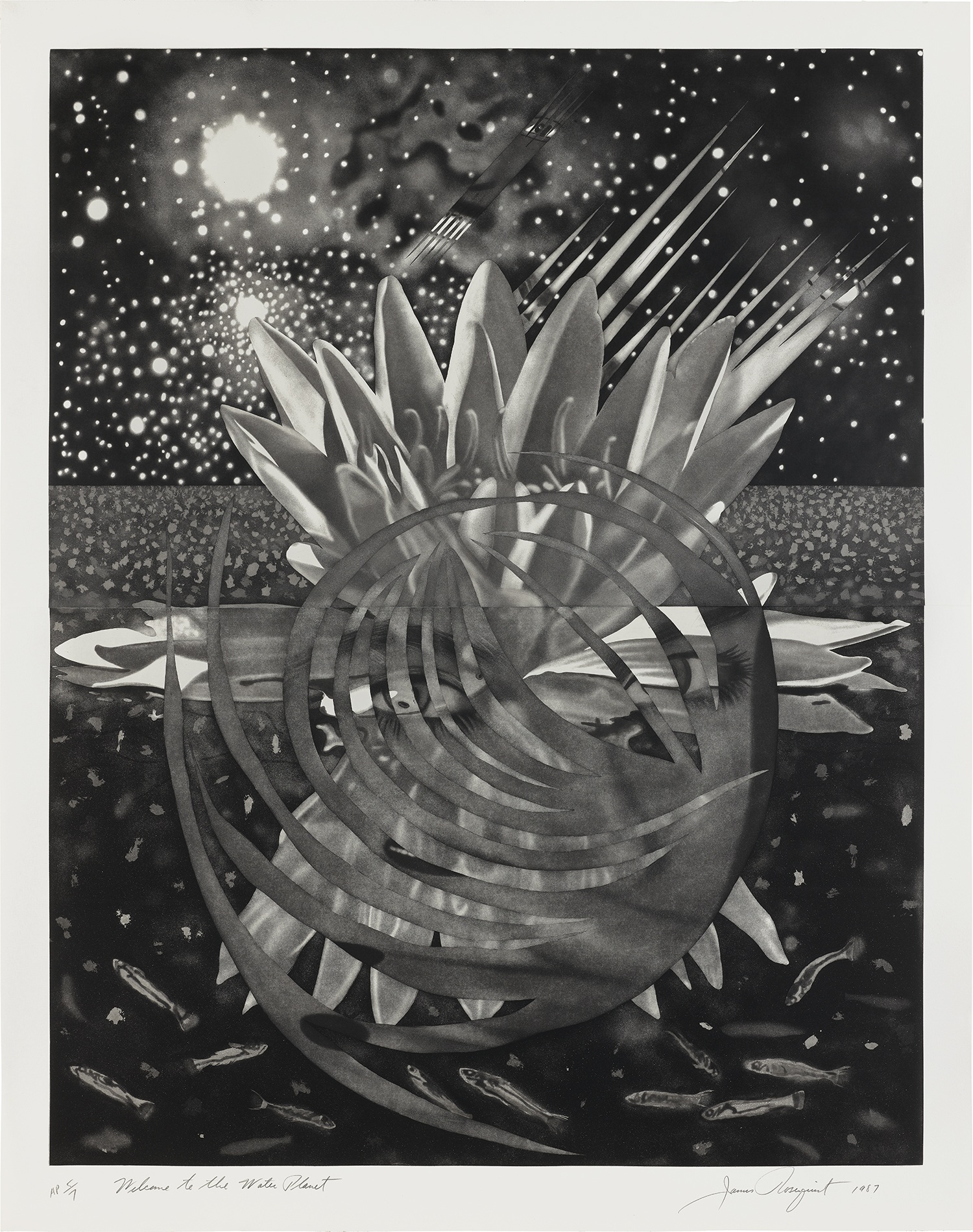



237
James Rosenquist
Welcome to the Water Planet (G. 211)
1987
Monumental aquatint, on T.H. Saunders paper, with full margins, folded (as issued).
I. 68 1/2 x 53 3/4 in. (174 x 136.5 cm)
S. 75 1/2 x 60 in. (191.8 x 152.4 cm)
S. 75 1/2 x 60 in. (191.8 x 152.4 cm)
Signed, titled, dated and numbered 'AP 5/7' in pencil (an artist's proof, the edition was 55), published by Graphicstudio, University of South Florida, Tampa (with their blindstamp), framed.